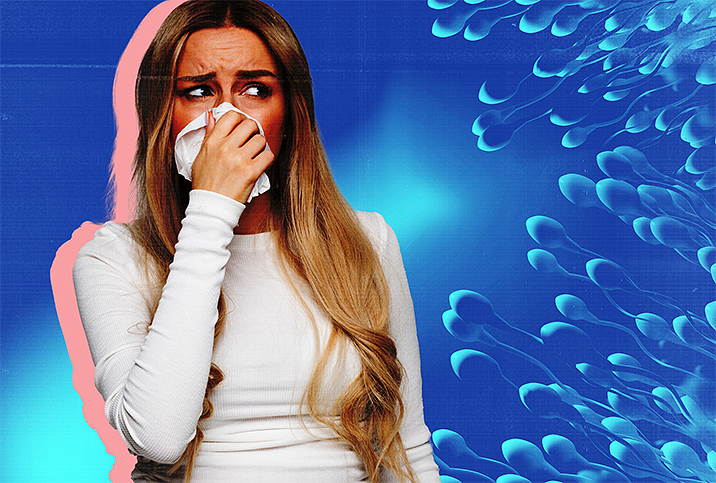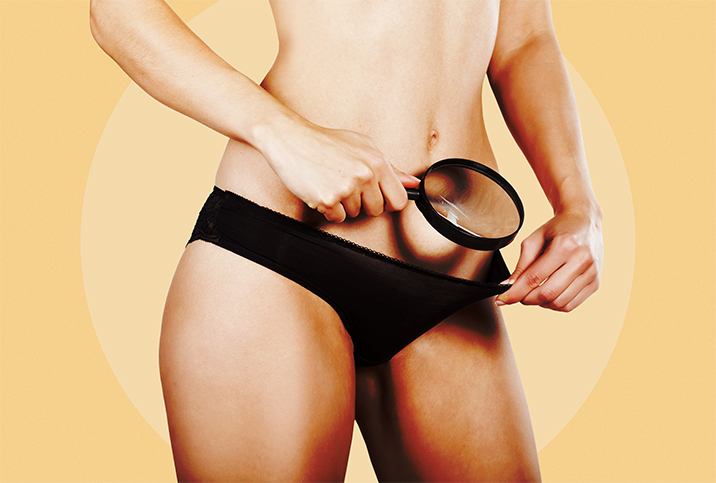A Form of Hives, Cholinergic Urticaria Can Affect Your Sex Life

The medical community's understanding of urticaria—or hives—has evolved significantly in recent years, leading to the identification of various subtypes with distinct triggers. One of those subtypes is cholinergic urticaria (CU), which has distinguishing features and details.
CU impacts sexual health specifically and wellness overall. Living with this condition requires some specific knowledge.
What is cholinergic urticaria?
Cholinergic urticaria is a distinct form of hives characterized by its specific response to increased body temperature and heat. Studies from the 1990s suggested that the prevalence of CU was as high as 20 percent in young adults at the time.
Cholinergic urticaria differs from other forms of chronic urticaria in that it shares similar symptoms but arises from alternative physical stimuli. Cholinergic urticaria reacts to an increase in internal body temperature, but more research is needed to uncover the exact reason behind the outbreak of hives.
It is important to understand the distinctions between urticaria subtypes, including chronic urticaria and cholinergic urticaria.
Chronic urticaria
Characterized by recurring itchy hives that last more than six weeks, chronic urticaria may be divided into two main categories: spontaneous and inducible. Spontaneous urticaria involves hives that appear without specific triggers, while inducible urticaria occurs in response to specific stimuli. About 1 percent of the U.S. and European general populations have this condition.
Cholinergic urticaria
Cholinergic urticaria is one of the forms of inducible urticaria. Each form of inducible urticaria is linked to unique triggers such as heat, cold, sweat, pressure, food or sun exposure. In the case of cholinergic urticaria, the hives are triggered by increased body temperature due to exercise, intense sexual intercourse, hot baths, emotional stress or even spicy food, to name a few examples.
The appearance of the hives can be described as follows:
- Small and punctate, meaning they have a pinpoint or dot-like appearance
- Accompanied by a surrounding flare reaction, which is an area of redness and inflammation around the rash
- Converging or joining together, forming larger patches
- Primarily occurring on the torso, arms and legs
The hives can also occur on the genitals, but that's rare.
What are the sexual repercussions of cholinergic urticaria?
One aspect of cholinergic urticaria that warrants further exploration is its impact in the bedroom. Increased body temperature is an obvious outcome of sexual activity, and when someone suffers from CU, a hives breakout during intimate moments can significantly disrupt sexual activity.
"Cholinergic urticaria is a skin condition that is triggered by physical stimuli such as heat and sweating rather than sexual activity," said Noor Hanif Said, M.B.B.S., the medical director and consultant dermatologist at Renaissance Dermatology Specialist Clinic, based in Singapore. "While CU does not directly affect sexual function, some individuals with CU may experience symptoms during or shortly after sexual activity as a result of sweating or heat exposure. Some people with CU may experience sexual dysfunction as a result of the condition or its treatment."
Rarely, cholinergic urticaria causes hives or itching in the genital area, including the penis, he added. Such symptoms are typically the result of sweating or heat exposure, though, not a direct effect of CU on the penis.
Hadley King, M.D., a board-certified dermatologist based in New York City, agreed the condition doesn't affect the penis directly, only indirectly. Hives can spread to the whole body but usually start on the thorax and neck. In general, the itchy hives occur shortly after an increase in core body temperature (after exercise, stress, etc.) but are short-lived, lasting a few minutes to an hour.
Cholinergic urticaria generally has a favorable long-term prognosis and there's a possibility of complete remission as a person ages. Some researchers have pointed out the need for better instruments to measure quality-of-life outcomes for patients currently living with CU.
How transmissible is cholinergic urticaria?
"CU is not a contagious or infectious disease, and it cannot be transmitted from one person to another," Hanif Said explained.
Cholinergic urticaria should not be mistaken for a sexually transmitted infection (STI). The hives may cause discomfort or itching, but they often subside.
How does CU impact relationships?
The hives from cholinergic urticaria are often described as a "tingling" or "stinging" pain. Therefore, engaging in sexual activity may cause discomfort for someone with these hives. Discomfort and pain exist on a spectrum, however, so it is important to openly discuss personal boundaries and comfort levels before sexual activity.
The presence of hives might also lead a partner to mistakenly believe the affected individual has poor personal hygiene or an untreated skin condition. Educating your partner about cholinergic urticaria can help dispel their misconceptions.
Raising awareness of the unique challenges posed by cholinergic urticaria in the context of sexual health can have a number of positive effects. It can help facilitate open conversations, foster understanding and promote the development of tailored strategies for managing this condition in all aspects of life.
"The discomfort and unpredictability of CU can also impact daily activities, such as exercise, work and socializing," Hanif Said explained. "Some people with CU may avoid physical activity or hot environments to prevent symptoms from occurring, which can impact overall health and quality of life. Additionally, the visible symptoms of CU may cause embarrassment or self-consciousness, which can also impact mental health and social interactions."
Get an accurate cholinergic urticaria diagnosis
Differentiating between the forms of urticaria is difficult in clinical practice. A definitive diagnosis can only be made by a qualified medical professional through diagnostic assessment involving diligent testing and taking a detailed patient history.
Despite the challenges in diagnosis, several effective treatments are used for cholinergic urticaria, Hanif Said explained. These include avoiding triggers, taking antihistamines or other medications, and phototherapy or immunosuppressive therapy in severe cases.
Have you noticed hives that may be connected to urticaria? Talk to a medical professional who can take your history and evaluate your situation. If you don't have a doctor you see regularly, telehealth makes it easy to connect with one.
Giddy Telehealth is an easy-to-use online portal that provides access to hundreds of healthcare professionals whose expertise covers the full scope of medical care. Many of them offer same-day video visits.


















